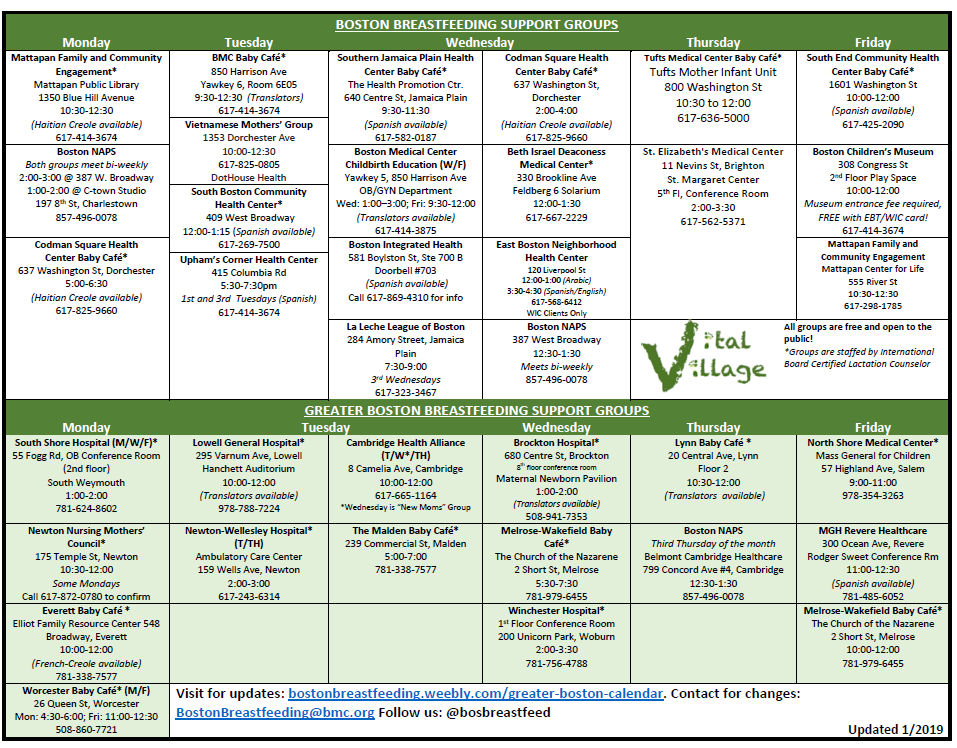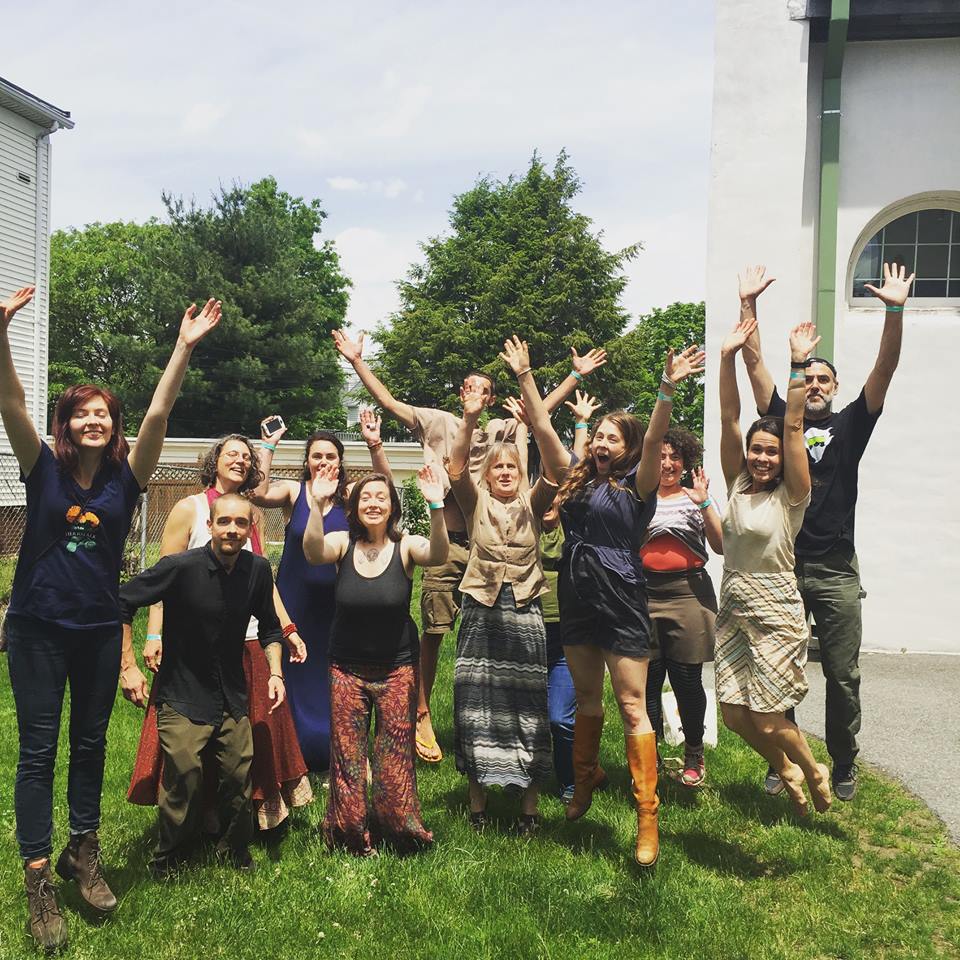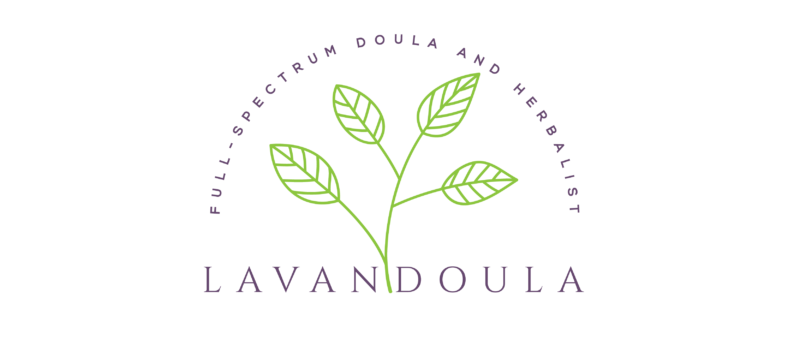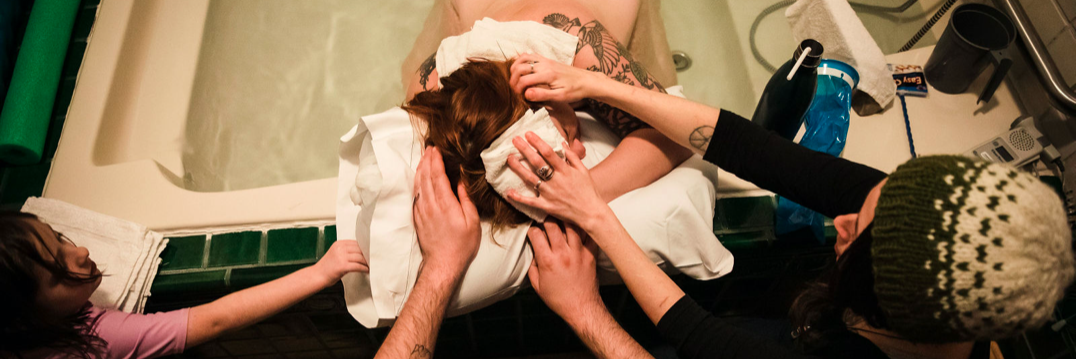My dear client Rachel at Healthy Chicks interviewed me for her blog long ago. I wanted to share that here and also crosspost because I often get questions like, “How did you get into this?” and “What’s your philosophy on X?” If you’re curious to hear more from me, read on…
R.K.: For someone who has never heard of one, what the heck is a doula anyway? In a nutshell, what do you do for your clients?
E.O.: A doula is basically an advocate and support for somebody in pregnancy, birth and postpartum – a strictly non-medical role. I want to clear up any misconceptions about the term – “doula” actually comes from the Greek word for “female slave.” A lot of doula training and certifying organizations water this down to say it historically means “women’s helper.”
The word “doula” only came into Western consciousness as a term for birth workers in the early 1970s. Truth is, throughout history, people have always had others (even just siblings, neighbors, family members) support their birth experiences. Given the state of modern maternity care, I think having a dedicated advocate in a hospital setting is pretty integral. In the U.S., healthy low-risk childbirth is actually the most common reason for hospital admission.
That being said, about one third of folks in the U.S. end up delivering surgically – a major intervention which has risks as well as benefits for both parents and babies. Studies show that just the presence of a non-medical support person lowers the risk of cesarean section, use of labor augmentation drugs or anesthesia, and also can potentially shorten the length of labor (wow)!
R.K.: What made you get into this type of work?
E.O.: Basically, I became a doula when I dropped out of a college social work program in 2009. I was searching for a different path that still involved working directly with people, but didn’t require going into substantial debt. Before moving to Boston for school, I used to volunteer with a domestic violence organization that had a hospital advocate role for folks who went to a local emergency room after an assault.
This advocate role has turned out to prepare me really well for birth work. It’s all about improvising to support someone the best way they need it in that moment. This could include explaining hospital policies or medical procedures and what to expect, or changing the subject entirely and telling a distracting story.
It could mean grabbing a warm blanket or snack. It could mean calming down an anxious/nervous family member or friend. It’s making connections to support groups or other community resources.
While pregnancy and childbirth are incredibly inspiring to me, helping to prevent trauma by softening the edges around an intimate medical experience is really what draws me to this work.
R.K.: What’s the most gratifying part of your job?
E.O.: Seeing people totally in their own power. Too often, we’re socialized not to advocate for our needs or to “be polite” and not inconvenience others. Birth has a way of smashing through social conventions, and we get to witness someone who may normally be shy start to advocate, quite clearly, for what they need (peace and quiet, water, low lights, touch or no touch).
When that baby finally arrives into my clients’ grasp, and they realize, “I did it!” – I don’t think there’s anything more gratifying in the whole world.
R.K.: Do you have a favorite memory or crazy story on being a doula?
E.O.: I will always have a big warm space in my heart for the families I end up spending 30+ hours with in labor. That being said, some of my most memorable/crazy births are the super fast ones.
I once helped catch a baby on the sidewalk just outside of the hospital! My client’s partner had just walked away, about 90 seconds prior, to park their car. My client was so deeply sturdy in her labor that even I had no idea we were seconds away from this baby – I thought we’d at least make it inside!
Luckily, it was a warm/sunny day and the rest of the care team arrived quickly after. Baby pinked up and cried right away – everybody was perfectly fine. Just a little bit of chaos before they landed peacefully in their hospital room together. Phew! (Technically, doulas are not supposed to be baby catchers!)
R.K.: As we know, I had a full moon baby. So what do you think — old wive’s tale or are more babies really born around the full moon? Any other fun wives tales?
E.O.: Your baby came in a memorable string of full-moon babies for me. I had an unusual three months in a row with back-to-back full moon babies. That being said, my sample size is quite small compared to a hospital or the general population of laboring families.
I think Labor and Delivery nurses have their own perspective, but the only correlation I tend to draw is with barometric pressure shifts. Sometimes a big storm hits New England and it seems like everybody’s water breaks…
R.K.: How about a birth plan, a do or a don’t?
E.O.: Honestly, it depends. I think certain hospitals or regions absolutely require some kind of communication document to help you advocate for your needs and wants. That being said, in the greater Boston area, where I practice, most hospitals have basic policies and practices that support the “big picture” of what many people want during labor: freedom to move, intermittent monitoring for low-risk labors, no IV without a medical reason. Episiotomies are absolutely not done routinely anymore.
That being said, if you get weird vibes from your provider or practice or birth place, it’s always good to ask specific questions about their rates of intervening and when they find certain procedures (such as an induction or cesarean section) to be absolutely necessary.
Because most folks birth in hospitals with a group practice, we can’t always know who our provider will be that day — are they going to be more or less conservative than who you had prenatal appointments with? Perhaps you have a traveling nurse who isn’t as familiar with hospital policies and tells you that you WILL need an IV, regardless of medical reason.
I think having a birth doula is a great way to have someone looking out for your wants/desires/preferences regardless of the other circumstances, and creating a birth plan with your birth doula and partner can make sure everybody is on the same page ahead of time.
It’s also great to have a “preferences” sheet (because you can’t plan birth) in case of an emergency or change of plan – if baby needs to be separated for any medical reason, perhaps partner goes with the baby and doula stays with you. Maybe you request extra uninterrupted time skin to skin when you’re reunited. Even within an unexpected change of plans, there are still options and choices that you can claim.
My biggest tips for a creating a birth plan/preferences sheet are to keep it short and sweet. I mean a simple bulleted list on one page — your biggest preferences stand out more that way. And especially be sure to list “outlier” preferences that may not be on the staff’s radar, such as “we wish to keep the placenta” or “we do not consent to a blood transfusion.”
R.K.: What’s your #1 piece of advice to someone who is newly pregnant and navigating this journey for the first time?
E.O.: It’s great to get informed and do research, but don’t get too “thinky.” As one of my clients’ friends wisely said during her birth, “Babies don’t come from your brain.” This especially applies to my Boston-area clientele.
A lot of self-identified type-A people who are really thorough researchers can get caught up in the theory/studies, and forget to “stop and smell the roses.” Taking time to slow down and tune into your own intuition can really help guide decision-making, and is just as valid (if not, moreso) as all the books, classes, etc. you can get your hands on. It can also help to tune out any of the negative birth stories that folks love to share when they know you’re expecting!
R.K.: I think it’s a misconception that doulas are these hippy dippy home-birth-only advocates. But you support all birth plans (natural, epidural, etc.). Are there any other misconceptions or something you want women to know?
E.O.: Doula support doesn’t have to be limited to birth. I know many doulas who provide postpartum support, or prenatal support in the case of bedrest, or support for pregnancy loss and abortion.
Doulas also don’t have to be cost prohibitive. In many states, birth or postpartum doulas are not covered on insurance plans, though some folks can get reimbursed through a Health Savings Account (if applicable). This currently makes doulas an out of pocket expense, and in a major metropolitan area such as Boston, an average doula fee can be anywhere from $1500-2000! If that’s in your budget, support from a doula can be absolutely worth the fee.
However, many doulas are flexible with their fees for families in need, and others who are looking to gain more experience may offer a lower rate as they build up a clientele. I’d never want folks to search for support, see a high out-of-pocket cost and just assume doula support can’t apply to them.
Some areas have doula collectives or volunteer-run organizations that work with families in need for low-cost. Many doulas list a fee, but have a separate statement on their websites about being happy to accommodate low income or high-needs families.
DoulaMatch.net is a good way to get started by seeing who practices in your area, and what the normal range of pricing can be. You deserve support!
Breastfeeding Support Groups in Boston
This list is current as of January 2018
Five Ways to Grow Your (Doula) Business Without Social Media
In 2011, I made a bold move. About a year after attending my first birth, I decided to quit Facebook. To this day, I’m one of the only self-employed millennials I know who does not have a Bachelor’s degree or Facebook account. I’ve lived in the Boston area this whole time, so my list is specific to things I’ve found helpful to building a practice around home. Many new or aspiring birth doulas reach out to me to gain a better understanding of how to get into self-sustaining practice. Here are five things I’ve found especially helpful in building my practice, without the surveillance and privacy issues of using social media websites.
- Networking events. This may be most helpful to newer birth workers in order to get out there, meet expecting families, and get practice quickly answering questions like, “What is your philosophy?” “Why did you decide to become a doula?” and “Can you describe how your style differs from others?” Local to Boston, both Mama & Me in Jamaica Plain and OmBirths via Down Under Yoga have “Meet the Doulas” nights that are free for parents (often drawing a large crowd) and $20-$25 for a doula to sign up. It’s valuable to meet folks who may potentially want to hire you, but also to meet other birth workers in the area who may have different skillsets or might be available as backup.
- Grow your referral network. In order to be an asset to your community, you need to know what resources exist in your area that serve the folks you hope to work with. MassBirth is a good place to get started. They have lists of everything from placenta encapsulation to postpartum and lactation support, to mental health counselors.
- Know other people who have your dream job? Invite them to tea. Take the fifty minutes you may spend on Facebook in a day, and actually get together with someone who does related work in your area. Getting to know folks on a more personal level makes for a strong network of backup support and will likely get you more referrals in the future.
- MassDoulas yahoo group. Created and moderated by the lovely home birth midwife Joyce Kimball, MassDoulas is a place where local birth workers are constantly sharing information, events, clients looking for support.
- Volunteer. Yes, birth work is often under-compensated and if you’re called to attend births professionally, you should be well supported in order to make it a sustainable adventure. That being said, if you’re new to birth and nervous to claim Professional Doula Status with confidence, Brigham and Women’s Hospital offers a volunteer birth doula program for teen moms, and you don’t need to be certified in order to attend. It’s a great way to get an idea of what local hospital policies and practices are, and informs work you’ll do with clients for years to come. Even if you don’t have the capacity to volunteer for birth support directly, you could spend time lobbying for initiatives like the Massachusetts bill to cover doulas on MassHealth.
Doulas and Birth Resources
Jacqui Morton is a doula, writer and founder of Holding Our Space, a participatory project centered around healing from reproductive loss. She also backs me up for births.
Maria of That Darn Doula is one of my backups in the area. She currently apprentices with a local home birth midwifery practice, and has experience at all local hospitals as well. She also backs me up for placenta encapsulation!
Tuly Duprat is an experienced birth doula who I connected with at Mama and Me. She is based in Malden, and has excellent rebozo skills. Tuly also speaks Portuguese.
Teresa Vittorioso-Fortin is a birth doula who offers childbirth classes through her practice, Entera Doula. She frequents Mount Auburn Hospital and is also fluent in Spanish.
Sierra at All Bodies Birth is a local birth and postpartum doula who especially loves to support LGBTQ+ families.
Jen at Douladventure brings her public health background to her work as a birth and postpartum doula in Boston.
Birth Sanctuary Boston is a group working to create an out-of-hospital birth option for families in Dorchester and beyond. It’s not easy work, but stay tuned for updates from them.
Beantown Babies is the combined project of doulas Emily and Lindsay. This amazing community space in Roslindale offers many things to new and growing families. From meditation workshops with Sophie, to childbirth ed classes with Teresa and acupressure for labor workshops with Ece, Beantown Babies has offerings that can enrich and support the pregnancy and birthing journeys of many local families.
Spinning Babies is a resource for fetal positioning and how it can affect labor. Tips for daily exercises/movements for getting baby engaged in the pelvis, as well as supportive labor positions can be found online.
The Miles Circuit is another series of simple movements to gently move baby into optimal positions for labor and delivery.
Mama and Me in Jamaica Plain offers a wide range of prenatal, postpartum, and child development classes for families in the Boston area. They host a bimonthly “Meet the Doulas” event that I frequently attend.
Doula Match is a search engine for folks looking for birth or postpartum doula support. You can compare profiles, availability, skillsets and experience all on one site.
Fertility and Conception Resources
My current favorite podcast, Fertility Friday is an amazing resource with TONS of free information about body literacy and the fertility awareness method. She has interviews with many fertility professionals around the topics of endometriosis, PCOS, thyroid disorders, autoimmunity, diet and lifestyle.
The Fertility Awareness Center can be a great beginner-friendly resource for tracking fertility cycles and getting to know your own signs of fertility. They do use lots of gendered language throughout the site. There is this little note about how fertility awareness tracking isn’t only just for straight, monogamous cis-women.
Angela Bell is an acupuncturist in Cambridge whose entire practice focuses on supporting fertility, conception and pregnancy.
New Moon Acupuncture is my dear colleague Ece’s practice includes acupuncture, moxibustion, manual therapies, nutritional counseling and lifestyle recommendation. She is based in Watertown.
Fertile Ground is a queer-friendly nurse and midwife team who provide compassionate gynecological care, fertility consultations and inseminations in the Boston area.
Susanna Mauzy at Nightingale Midwifery offers a full-spectrum of home birth midwifery care. She also offers fertility counseling and at-home insemination support. Susanna also runs the local International Cesarian Awareness Network groups in Arlington, MA.
Birthing Beyond the Binary hosts queer-friendly conception and childbirth education workshops online. They also have workshops for providers on how to support queer families in their practices. Online groups for queer families can be found here, as well!
Maia Midwifery is the practice of west-coast midwife, Kristin Kali. She offers individualized fertility counseling online, and conception support in person in Seattle. Her practice is built around supporting the needs of the LGBTQ community, parents conceiving over age 35, and single parents. She shares an amazing resource list with examples of known donor contracts, and parenting agreements for families who have more than two parents.
Choice Moms Podcast has a large amount of discussions and information surrounding fertility, conception, building a family as a single parent, adoption, conception with donor sperm and many topics related to these.
Healthy, Affordable, Boston-Area Food
In order to make them more organized and accessible, I’m moving my resources page to a series of blog posts. Here I start with local to Boston food resources, including financially accessible options. High quality, local, wild and accessible food is the foundation of so much, and I want to keep spreading knowledge of resources to folks in my community. Here goes.
This Map of the “urban commons” in Somerville/Cambridge with public food sources. Mulberries and more!
Find a farmer’s market in your neighborhood.
How to use EBT/SNAP at local farmers markets.
The Neighborhood Farm in Needham has been known to have pay-what-you-can boxes available for their fresh produce at farmers markets in JP and Roslindale.
The Daily Table is a not-for-profit grocery store in Dorchester which serves fresh produce and ready-made healthy food. They seem to be opening a new location in Roxbury, as well.
Buckle Farm is where I source most of my and fresh produce year-round. He farms pork, too!
Consumer Reports: Your Biggest C-Section Risk May Be Your Hospital
While the World Health Organization states that the ideal rate for necessary cesarian births should be around 10-15% (with more recent studies showing that rates above 10% do not decrease mortality rates for parents or for babies), the US Office of Disease Prevention and Health Promotion (Department of Health and Human Services) sets our goal at 23.9%. Since this goal was set (as 10% lower than the average in 2007), approximately 60% of hospitals in the United States do not yet meet this goal.
Another doula and I were chatting about experiences at a local hospital where a client of mine awaited a planned cesarian for a suspected big baby. This doula mentioned that the birth site we were discussing was on the top of a list of local hospitals who perform medically unnecessary cesarian sections. She shared with me the consumer report on cesarian rates for low-risk babies. The report does not include cesarian statistics from anyone who has a prior cesarian, is carrying more than one baby, or who has a baby in anything but a head-down position. This data also doesn’t include anyone with a chronic health condition, heart problems, high blood pressure or obesity. Truly, this is a thorough compilation of comparative unnecessary cesarian rates, state-by-state.
Some takeaways about Boston-area birth sites:
The lowest cesarian section rates come from:
- Cambridge Health Alliance (which includes Cambridge Birth Center and Cambridge Hospital)
- Mount Auburn (don’t think any Boston-area birth worker is surprised about this)
- Massachusetts General Hospital
The worse-than-average cesarian section rates come from:
- Tufts Medical Center
- St. Elizabeth’s
- Newton-Wellesley Hospital
- Brigham and Women’s Hospital
- Boston Medical Center
The highest cesarian section rates come from:
- South Shore Hospital
- Brockton Hospital
- Melrose Wakefield Hospital (Hallmark Medical System)
Just something else to consider when choosing where to give birth around Boston!
Herbstalk 2016 Teachers (Saturday, June 4)
Herbstalk 2016 was last weekend in Somerville, MA. The group of Saturday teachers gathered outside the Armory (it was rainy on Sunday), and I participated in my first ever “group jump” photo.
More on the class I taught:
With our culture’s strong focus on birth control and avoiding pregnancy, many people are left in the dark when they actually WANT to become pregnant! With the trend toward older ages for first-time parents (especially around Boston), many are wondering how to prepare their bodies best for parenthood. Why does it seem like everybody has babies so easily while others struggle for years, considering invasive fertility treatments? What does it even feel like to ovulate?
Come learn how to lay the groundwork for healthy fertility cycles, nourish your gametes and give yourself the best chance to have a healthy baby with the help of medicinal herbs and foods. This class is taught from the perspective of a birth doula who has years of experience helping parents (of many ages) have babies around Boston, MA.

Musings on Marshmallows
Marshmallow Fluff. A New England “staple” food. Many folks in the northeast have some kind of nostalgia for the goopy, white substance. It was, after all, created in Somerville, MA. We love it enough to have an annual “What the Fluff?” festival in Union Square. Originator Archibald Query had been selling his mallowy creation door-to-door until World War 1, when shortages caused him to cut back. Two fellows, Durkee and Mower, originally from Swampscott, bought the recipe for $500 and eventually became the largest distributors of marshmallow cream in New England. Right out of Lynn, Lynn, city o’ sin…

It is said that in 1950, when their new factory was built, the switch was made from granular sugar in 100 pound bags to liquid sugar stored in 5500 gallon stainless steal tanks. I’m not clear if this is the beginning of the use of corn syrup in Fluff. However, with the US government subsidies of corn, high tax on foreign sugar sources and over-bearing sweetness of the syrup eventually made it the favorite additive of American food creators.
Currently, Fluff is made from four ingredients: corn syrup, sugar syrup, dried egg whites and vanillin. The average American eats 60 pounds of corn syrup each year. While debate swells over the safety of GMO corn, studies have shown that mammals fed diets of Monsanto’s corn have increased instances of kidney and liver damage. Two things stand out to me about these studies. One, the rats were not only fed GMO corn in various quantities, but also drank water containing similar levels of pesticide runoff as Americans regularly consume. Two, the effects were worse in female rats. Science (and Monsanto) has a history of ignoring health disparities by sex, with studies focused on results in male bodies
On to the good news:
Folks at my herb school are very excited about Apotheker’s, Jamaica Plain-based chocolatiers who use no corn, soy, dairy, gluten or even refined SUGAR in their sweets. Yes, I found out at Herbstalk this year that Apotheker’s is now making marshmallows. The ingredients as follows: organic honey, kosher grass-fed beef gelatin, organic marshmallow root powder, organic almond extract, unsweetened coconut, organic coconut oil. Can you sense my excitement? The lovely folks at Apotheker’s have taken the white, mushy nutritionally-devoid and potentially dangerous Fluff of my childhood and turned it into an actual FOOD. I promptly asked my local City Feed and Supply to carry these delicious nuggets.


